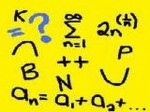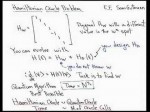February 6, 2013

“Violent video games are a bigger problem than guns, Sen. Lamar Alexander (R-Tenn.) said Wednesday. “I think video games [are] a bigger problem than guns, because video games affect people,” Alexander said on MSNBC. “But the First Amendment limits what we can do about video games and the Second Amendment to the Constitution limits what we can do about guns.”* There isn’t a single scientific study linking games to video game violence, and the theory that games do lead to violence has been debunked repeatedly. Yet why won’t politicians stop scapegoating games for the violence problem? Cenk Uygur explains that the reason is what it always is…greed. *Read more from Daniel Strauss/ The Hill: thehill.com Support The Young Turks by Subscribing bit.ly Like Us on Facebook: www.fb.com Follow Us on Twitter: bit.ly Buy TYT Merch: theyoungturks.spreadshirt.com
Tags: bigger-problem, constitution, daniel-strauss, facebook, lamar-alexander, news & politics, theory, video game, violence, young-turks
Posted in Internet Network Problem | No Comments »
April 20, 2012

www.NiallMcLaren.com An overview of my work showing a natural dualist resolution of the mind-body problem for psychiatry which leads directly to a model of mental disorder. Remember, dualism does NOT necessarily lead to spiritualism and my model fits perfectly within the material realm. When most hear dualism they think of Descartes and thus Cartesian dualism which IS spiritual However, the philosopher David Chalmers outlined a material form a dualism, termed natural dualism, which is what my model builds upon. We must understand that the mind is non-reducible, similar to the computer program I’m using to make this lecture. There is of course the substrate/hardware which runs the function, but knowing all there is to know about this hardware/brain will never reveal the program/mind, and this is where biological psychiatry fails. Suppressing an output state (with medications) without fixing the cognitive processes that give rise to that mental state is an incomplete treatment paradigm. If you have any questions or comments on my work please feel free to post a comment, email me, post on my blog etc. I always to try to answer questions and entertain criticisms as this is the engine of scientific progress. Philosophy & Psychiatry Blog www.NiallMcLaren.com Facebook – Niall McLaren http Books (Amazon.com) www.amazon.com www.amazon.com www.amazon.com
Tags: david-chalmers, machine, mind, monist, problem, psychiatry, psychoanalysis, psychology, theory
Posted in Software Functioning Abnormally | No Comments »
January 20, 2012

FACEBOOK: facebook.com TWITTER: twitter.com MYSPACE: myspace.com This problem has been solved by: www.youtube.com This video presents a checkmate in 24 moves puzzle along with an answer as well as a chess/mathematical problem that is unsolved* and in search of a solution (proof). Internet Chess Club (ICC) chessclub.com
Tags: answer-as-well, chess, competition, difficult, fun, game, girl, opening, tactics, theory, young
Posted in Internet Network Problem | No Comments »
January 14, 2012

Google Tech Talks April, 2 2008 ABSTRACT Imagine a game where two players go back and forth making moves and at the end of a fixed number of moves the position is either a win or a loss for the first player. In this case, if both players play best possible, it is determined at the first move who wins or loses. To figure out who will be the winner you need not look at all of the N final positions but only at N^0.753. I will show that with a quantum computer the exponent can be reduced to 0.5. The technique involves quantum scattering theory and illustrates how ideas from physics can be used to design quantum algorithms that outperform even best possible classical algorithms. Speaker: Edward Farhi Professor of Physics; Director, Center for Theoretical Physics Massachusetts Institute of Technology Research Interests: Edward Farhi was trained as a theoretical particle physicist but has also worked on astrophysics, general relativity, and the foundations of quantum mechanics. His present interest is the theory of quantum computation. As a graduate student, Farhi invented the jet variable “Thrust,” which is used to describe how particles in high energy accelerator collisions come out in collimated streams. He then worked with Leonard Susskind on grand unified theories with electro-weak dynamical symmetry breaking. He and Larry Abbott proposed an (almost viable) model in which quarks, leptons, and massive gauge bosons are composite. With Robert Jaffe, he worked out many of the …
Tags: diy, education, edward-farhi, google-tech, massachusetts, outperform-even, physics, talks, tech, technology, techtalk, theory
Posted in Slow Working Computer | No Comments »






